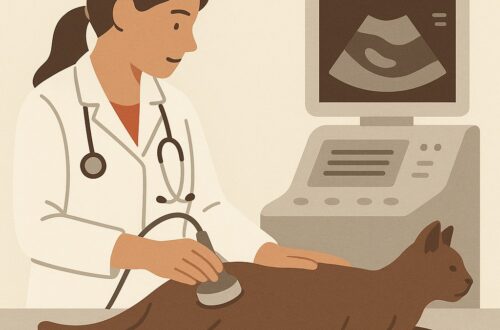Recently I came across a news story of a couple who visited the Dominican Republic. While in the tropical paradise, they became infected with a parasite from the genus Ancylostoma. more commonly known as hookworms. They likely contracted this painful parasitic infestation while walking barefoot on the local beaches of Punta Cana. I wanted to dedicate some time to sharing information about this important infection that commonly affects dogs and cats. Happy reading!
Hookworms – What are they?
Hookworm infection, also called ancylostomiasis, is an important disease in dogs and cats because they suck blood, can be transmitted to unborn puppies (but not kittens), and can infect humans. The species that infect dogs and cats are:
- Ancyclostoma caninum (dogs only)
- Ancylostoma brazilienze (dogs & cats)
- Uncinaria stenocephala (dogs only)
- Ancylostoma tubaeforme (cats only)
Adult worms live in the small intestines where they “hook” onto the intestinal wall via six sharp teeth and suck blood. The worms reproduce in the small intestinal tract, and female worms produce eggs that are defecated into the world in feces. In the environment, eggs hatch and subsequently progress through three larval stages. Adult dogs may be infected via several routes:
- Larvae directly penetrate a dogs’ skin (this is likely what happen to the couple in the Dominican Republic)
- Dogs’ fur becomes dirty with contaminated soil that is ingested as dogs clean themselves
- Dogs ingest (part of) a contaminated prey animal

Once in the body, larvae migrate to the small intestines to mature and reproduce. Occasionally, some third stage larvae tunnel through the body until they reach the lungs. In this location, larvae develop into a fourth stage and tunnel into the airway like the trachea (windpipe). Dogs then cough up the larvae and subsequently swallow them, so they reenter the intestinal tract. Interestingly, some worms never complete their migration path. Some become dormant and encyst in tissues throughout the body, only to become active and complete their migration at some point in the future.
Puppies may become infected via three additional routes. During pregnancy, hormonal changes can cause encysted larvae to emerge (a process called excysting), releasing larvae into the mother’s body. These larvae subsequently migrate to the unborn puppies themselves or to the mammary glands; puppies (not kittens) then ingest contaminated milk.
Hookworms – What does infestation look like?
Hookworm infestation commonly affects puppies and kittens. These fur balls are growing rapidly, and this maturation requires oxygen. Oxygen is transported throughout the body by red blood cells that are made in the bone marrow. Infected pets can lose a lot of blood through the blood-sucking actions of hookworms. Without treatment, puppies and kittens essentially bleed to death. Clinical signs often associated with hookworm infestation are lethargy, pale mucous membranes (gums), weakness, and diarrhea.
Hookworms – How is infestation diagnosed?
Diagnosis is relatively straightforward. Dogs and cats with appropriate clinical signs and history should be screened for ancylostomiasis via a fecal flotation examination. This type of testing is commonly performed by primary care veterinarians in their respective hospitals. Occasionally, they will recommend submitting a fecal/stool sample to a reference laboratory staffed by medical technologists and board-certified veterinary parasitologists.

Hookworms – How is infestation treated?
The best treatment for hookworm infestation is to prevent it from occurring in the first place. Most heartworm preventative medications also prevent hookworm infection. Please speak with your primary care veterinarian about the most appropriate heartworm preventative for your pet.
Traditional treatment of ancylostomiasis involves the use of a medication to kill the worms, as well as provision of supportive depending on the pet’s condition. Currently, several products are available to effectively kill adult hookworms, including:
- Fenbendazole (Panacur®)
- Pyrantel pamoate (Nemex®, Drontal®, Strongid T®)
- Mebendazole (Telmintic®)
- Ivermectin
- Milbemycin oxime
- Emodepside (Profender®)
- Selamectin
- Moxidectin
These drugs act locally in the intestinal tract to kill adult warms, and they are not absorbed by the pet’s body. This “deworming” process must be repeated in 2-4 weeks because the second “deworming” kills worms that weren’t adults at the time of the initial treatment. Depending on the severity of infestation, affected dogs and cats may require a variety of supportive interventions, including intravenous fluid therapy, blood transfusions, anti-nausea medications, iron supplementation, and nutritional support. Environmental cleanliness is important to preventing infection. Thankfully, hookworms are not hardy, and die within a few months of being in the environment. Borates may be raked into soil to kill hookworms, but use will also kill vegetation and grass.
The take-away message about hookworm in dogs and cats…
Hookworm infestation or ancyclostomiasis is a common and potentially life-threatening internal parasitic infestation in dogs and cats. Early detection through fecal/stool testing and prompt treatment leads to good outcomes. Without treatment, pets often die, and infestation can be transmitted to humans.
To find a board-certified veterinary internal medicine specialist, please visit the American College of Veterinary Internal Medicine.
Wishing you wet-nosed kisses,
CriticalCareDVM





